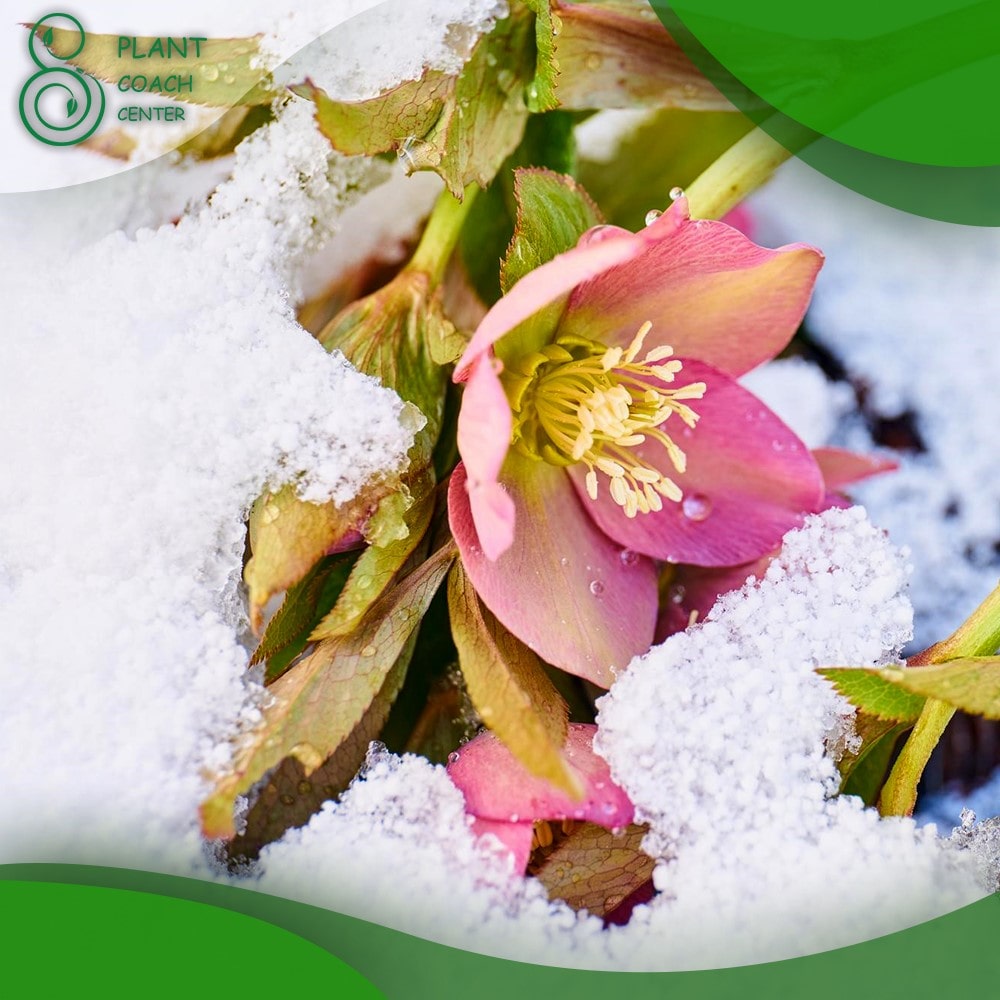Introduction to When to Prune Hellebores
Welcome to the world of hellebores, those cherished denizens of our gardens that bring year-round delight. In the world of gardening, timing is often everything, and when it comes to hellebores, knowing the precise moment to prune can make all the difference. Pruning hellebores isn’t just about aesthetics; it’s about nurturing healthy, vibrant plants that flourish year after year.
In this article of plantcoachcenter.com , we’ll take you on a journey through the seasons, helping you grasp the nuances of hellebore pruning timing. Our goal is simple: to empower you with the knowledge needed to make your hellebores the envy of the neighborhood. So, let’s dive in and discover the secrets behind when to prune these beloved garden treasures.
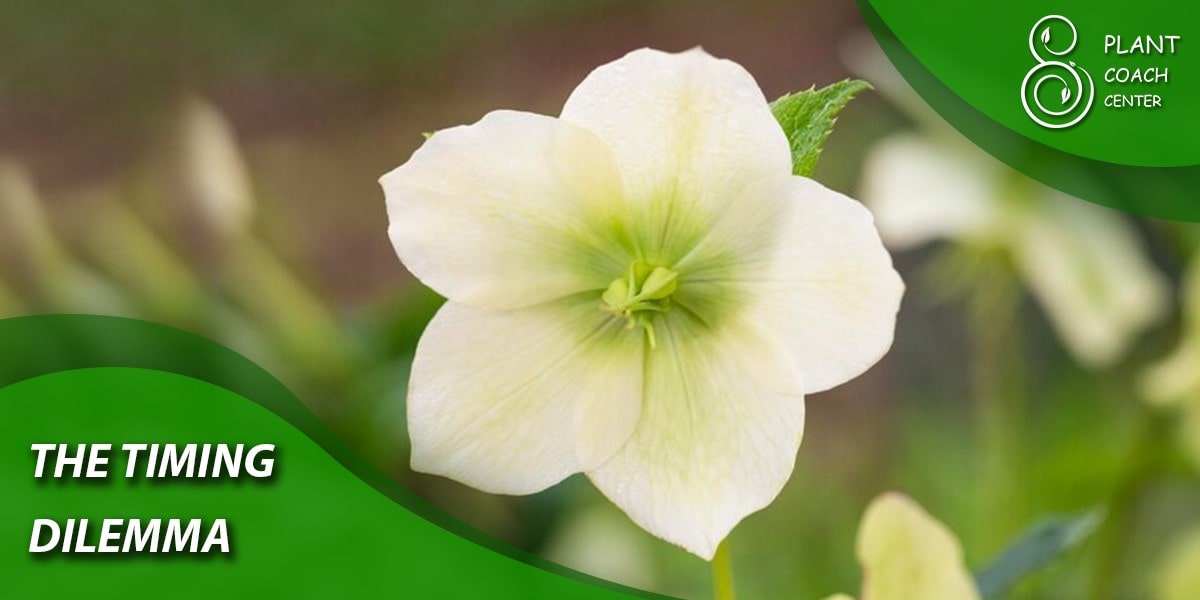
The Timing Dilemma
Determining the perfect moment to prune your hellebores can be a bit like finding a needle in a haystack. Here’s why:
Challenge of Timing:
Hellebores, known for their year-round charm, don’t adhere to a strict pruning calendar. Unlike some plants with predictable pruning seasons, hellebores present a timing puzzle. They march to their own rhythm, making it tricky to pinpoint when they’re ready for a trim.
Variety Matters:
Hellebores aren’t all cut from the same cloth. Different varieties exhibit diverse growth patterns. Some are evergreen, retaining their foliage year-round, while others may shed their leaves. This variety means that what works for one hellebore might not suit another. Recognizing these distinctions is key to successful pruning.
Precision is Paramount:
The health and beauty of your hellebores hinge on precision. Unlike more forgiving plants, hellebores can be sensitive to the timing of pruning. An ill-timed snip can disrupt the emergence of delicate flower buds and compromise the plant’s overall vigor. To keep your hellebores thriving, it’s vital to master the art of timing.
Pruning Hellebores in Late Winter/Early Spring
February to March – The Prime Window for Hellebore Pruning
During late winter to early spring, typically in the months of February and March, a unique opportunity arises for hellebore pruning. This period is like the calm before the hellebore storm – a time when the plant is poised for action but hasn’t quite burst into full bloom. Here’s why this window is prime for pruning:
Optimal Conditions for Pruning:
As the winter chill begins to wane and the days grow longer, hellebores awaken from their seasonal slumber. This transitional phase presents the ideal conditions for pruning. The plant’s growth is revving up, yet it hasn’t invested all its energy into blooming just yet.
Damage Control for Emerging Buds:
One crucial reason to prune during this time is to avoid collateral damage to emerging flower buds. Hellebores produce their delicate, cup-shaped blooms close to the ground, making them vulnerable to accidental snips. By pruning in late winter to early spring, you can meticulously remove last year’s foliage and any unsightly remains while sparing the nascent buds that are preparing to unfurl their beauty.
So, consider February and March your hellebore pruning sweet spot – a strategic moment that ensures your hellebores will greet the coming spring with their finest display.
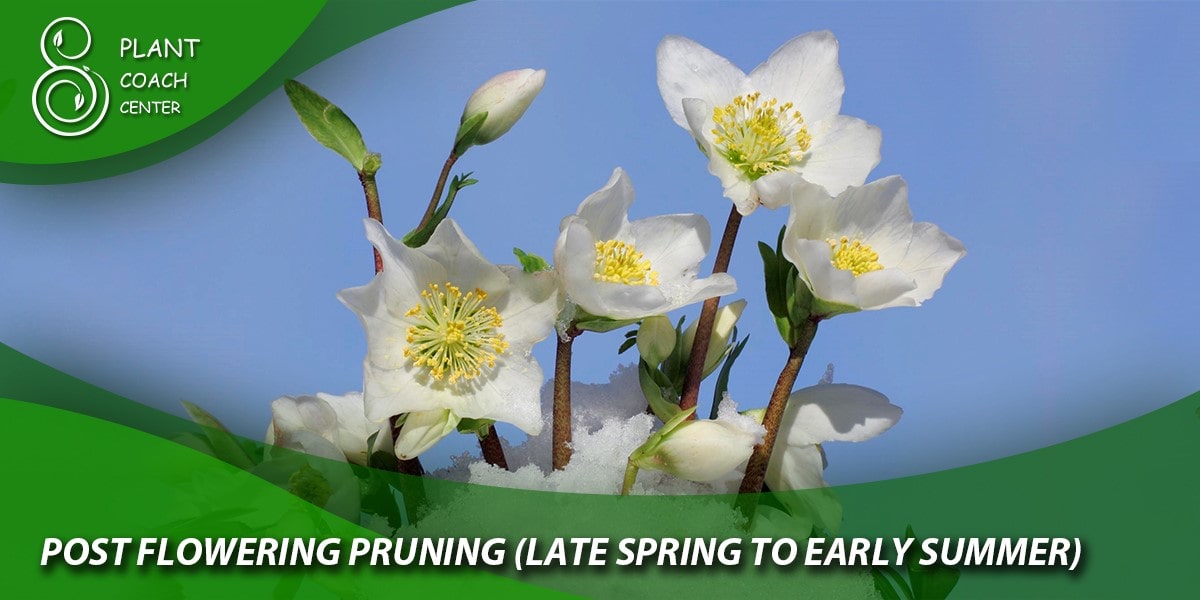
Post-Flowering Pruning (Late Spring to Early Summer)
Benefits of Trimming Hellebores After Flowering
Late spring to early summer ushers in a new phase of hellebore care – post-flowering pruning. This is the time to harness the momentum of a successful bloom and set the stage for the plant’s future growth. Let’s delve into the benefits of this particular pruning approach:
Renewed Aesthetic Appeal:
Once the hellebore blooms have gracefully adorned your garden, they begin to fade, leaving behind the remnants of their former glory. Post-flowering pruning offers a chance to revitalize the plant’s appearance. By removing spent flowers and foliage, you can give your hellebores a fresh, tidy look that enhances the overall aesthetics of your garden.
Encouraging Future Growth:
Pruning hellebores after flowering helps redirect the plant’s energy. Instead of channeling resources into seed production or maintaining old growth, the hellebore can invest in developing new leaves and roots. This leads to stronger, more vigorous growth, setting the stage for a spectacular display in the next blooming season.
Taming the Spread:
Hellebores have a knack for self-seeding, which can result in a lush, but sometimes unruly, population. Post-flowering pruning allows you to snip off seed heads before they disperse, reducing the chances of hellebores spreading where you don’t want them. It’s a valuable method for maintaining control over the plant’s expansion in your garden.
So, late spring to early summer pruning isn’t just about post-bloom clean-up; it’s a strategic move that boosts the vitality of your hellebores while keeping their exuberance in check.
The Importance of Avoiding Summer and Fall Pruning
Why Summer and Fall are Unsuitable for Hellebore Pruning
Summer and fall, the seasons of warmth and transformation in the garden, may beckon you to the pruning shears, but when it comes to hellebores, restraint is the key. Here’s why these seasons are a no-go for hellebore pruning:
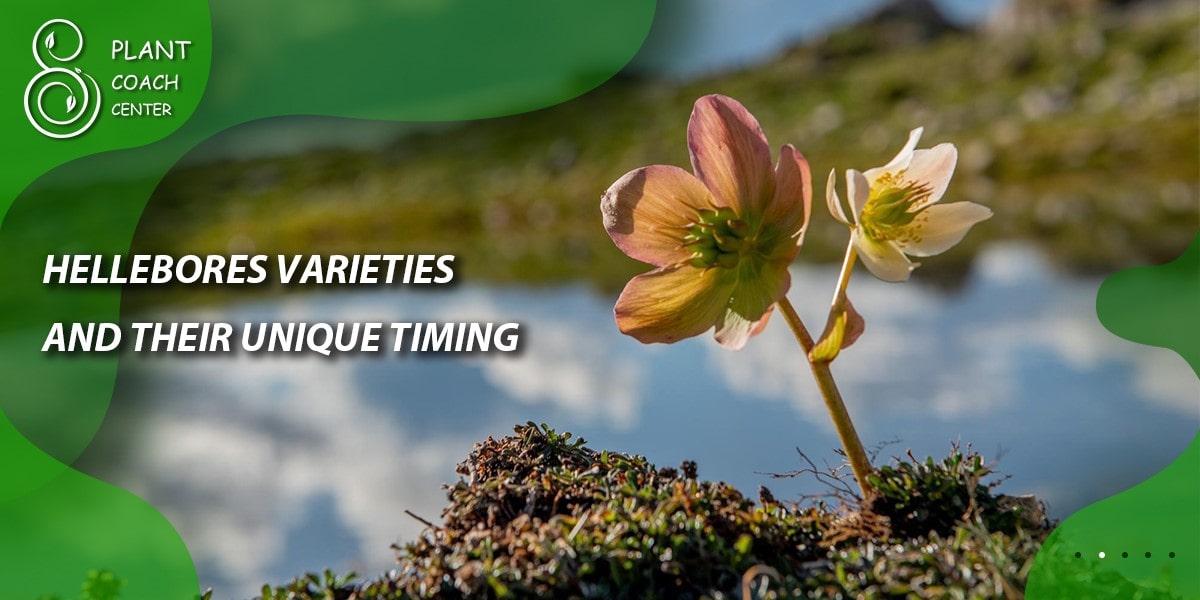
Energy Storage in Summer:
During the summer months, hellebores undergo a subtle but vital process. They replenish their energy reserves, building up strength for the future. This is achieved through the photosynthesis process, where leaves capture sunlight and convert it into stored energy. Any pruning during this period would disrupt this crucial energy accumulation, potentially weakening the plant.
Fall – A Time for Dormancy:
As fall ushers in cooler temperatures, hellebores enter a state of semi-dormancy. Their focus shifts from growth to preservation. The plant redirects resources to its root system, reinforcing its foundation for the coming winter and spring. Pruning at this time can interfere with the plant’s preparation for the colder months.
Pruning Stress and Disease Risk:
Summer and fall pruning also carry the risk of causing stress to the hellebore. Open wounds from pruning are more susceptible to infection during these seasons, as pathogens and pests are often more active. Hellebores are generally hardy, but exposing them to unnecessary stress and potential disease can compromise their health and longevity.
In sum, while the lure of pruning may be strong in summer and fall, resist the temptation when it comes to hellebores. Allow these seasons to be a time of rejuvenation and preparation for your beloved plants, ensuring they remain robust and resilient year after year
Hellebores Varieties and Their Unique Timing
Addressing Variations in Hellebores Species and Cultivars
Hellebores, though united under a common botanical umbrella, boast a diverse family tree of species and cultivars. Each member of this hellebore family brings its own distinct characteristics and timing preferences to the pruning table.
Variations in Hellebores Species:
Hellebores encompass a range of species, including Helleborus orientalis, Helleborus foetidus, and Helleborus argutifolius, to name just a few. Understanding these species’ growth patterns is crucial for effective pruning. For instance, Helleborus foetidus, commonly known as the stinking hellebore, retains its foliage throughout the year. In contrast, Helleborus orientalis, often referred to as Lenten rose, benefits from a selective trim after flowering.
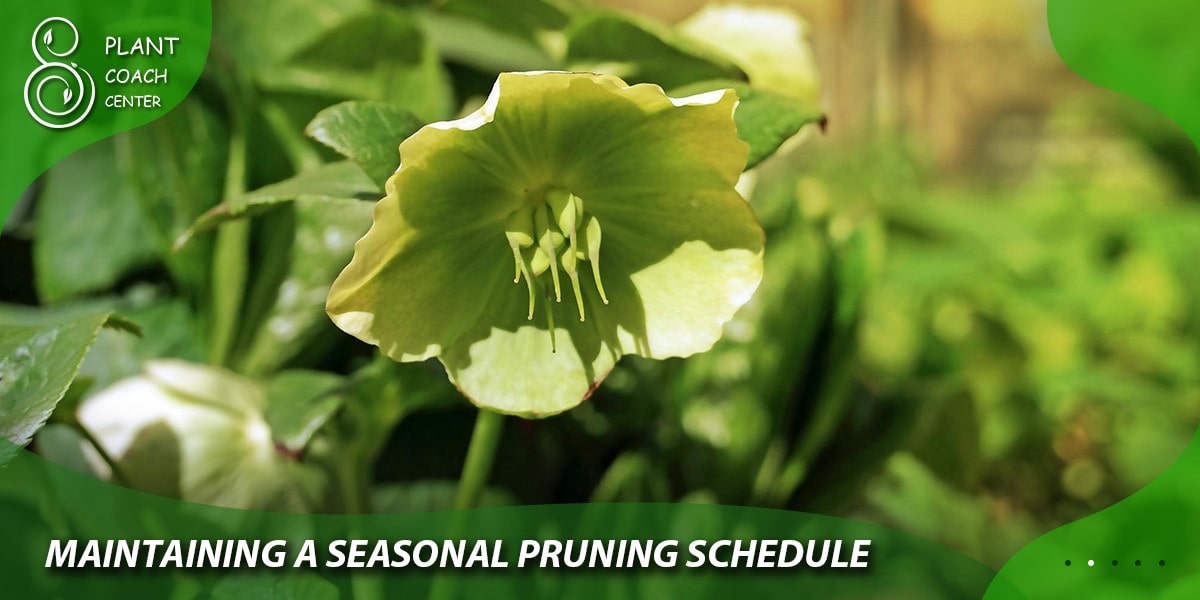
Cultivar-Specific Timing:
The timing of pruning can indeed vary significantly depending on the specific hellebore cultivar you have in your garden. Each cultivar may have its own unique growth and flowering patterns that dictate when it’s best to prune.
For example, consider the ‘Royal Heritage’ hellebores, which often produce abundant foliage. These plants may require more frequent pruning to maintain their appearance and prevent overcrowding. On the other hand, cultivars like those from the ‘Winter Jewels’ series, renowned for their vibrant blooms, may benefit from a lighter touch when pruning to preserve their aesthetic appeal.
To sum it up, understanding the specific variety or cultivar you have is crucial in determining the timing of your pruning efforts. Tailor your approach to the unique characteristics of each hellebore in your garden to ensure they thrive and bring their individual beauty to your landscape.
Maintaining a Seasonal Pruning Schedule
A Practical Calendar for Hellebores Pruning
Creating a seasonal pruning schedule for your hellebores can be a game-changer in keeping these lovely plants at their best. Here’s a practical calendar to guide you through the year:
Late Winter (February – Early March):
Start your pruning regimen in late winter, usually in February.
Focus on removing old, tattered foliage from the previous year, taking care not to harm emerging buds.
This is the prime time for a thorough clean-up.
Late Spring to Early Summer (April – June):
After the hellebores have finished flowering (usually in April or May), turn your attention to post-flowering pruning.
Trim spent flower stalks and tidy up the plant’s appearance.
This is an excellent time to address any self-seeding concerns by removing seed heads.
Summer (July – August):
Hands off the pruners during summer.
Allow your hellebores to bask in the sun and focus on replenishing their energy reserves.
Fall (September – October):
Continue the no-pruning policy in the fall.
Let your hellebores prepare for the colder months and build their root systems.
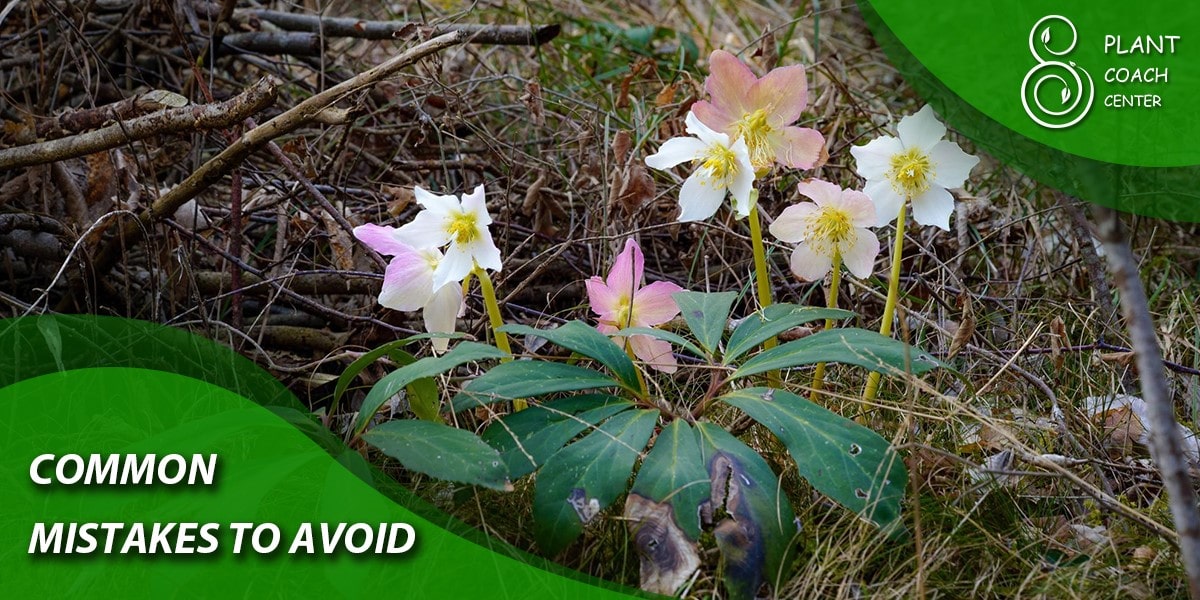
Tips for Staying Organized:
Keep a Garden Journal: Maintain a garden journal or digital calendar to track important dates for hellebore care, including pruning times. Note the specific varieties you have and their unique needs.
Set Reminders: Use your smartphone or a physical calendar to set reminders for pruning times. These reminders can help you stay on top of your hellebore maintenance.
Regular Garden Walks: Make it a habit to take regular strolls through your garden. This allows you to closely observe your hellebores and identify when they need attention.
Group Tasks: If you have multiple hellebores with different pruning needs, consider grouping them together in your garden. This makes it easier to tackle specific tasks during the appropriate season.
By adhering to this seasonal pruning schedule and staying organized, you’ll ensure that your hellebores remain healthy and stunning throughout the year, becoming a highlight of your garden.
Common Mistakes to Avoid
Pruning hellebores, while not overly complex, does require careful attention to timing and technique. Here are some common mistakes to steer clear of:
Pruning Too Late in the Season:
One of the most prevalent errors is delaying the pruning process. If you wait until late spring or summer to prune, you risk disturbing the new growth and flower buds emerging from the base of the plant. This can lead to diminished blooming and a less robust plant overall. Remember, late winter to early spring is the sweet spot for hellebore pruning.
Over-Pruning or Cutting Too Close to the Crown:
While a good trim is beneficial, over-pruning can be detrimental. Cutting too close to the crown of the plant can expose it to disease and weaken its overall structure. Instead, aim for a selective approach, removing only old, yellowing leaves and spent flower stalks, leaving the rest intact.
Neglecting to Sterilize Pruning Tools:
Pruning tools can harbor pathogens that may harm your hellebores. Failing to sterilize your tools before use can lead to the spread of disease. Make it a habit to clean and disinfect your pruning shears or scissors with rubbing alcohol or a bleach solution between uses to protect your plants.
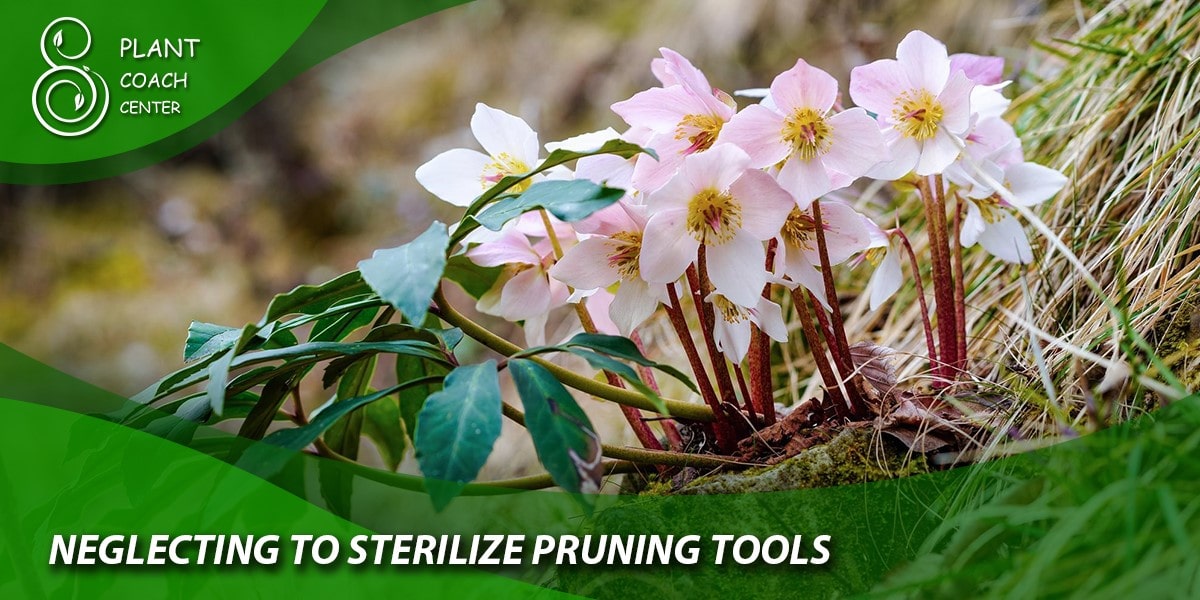
Disposing of Infected Plant Material in Compost:
If you encounter any diseased or damaged plant material while pruning, resist the temptation to toss it into your compost pile. Instead, dispose of it in your regular trash or, if available, a green waste bin. Composting infected material can perpetuate disease in your garden.
By sidestepping these common pitfalls, you’ll be well on your way to mastering the art of hellebore pruning. A little patience, precision, and care will go a long way in ensuring your hellebores flourish and continue to grace your garden with their unique beauty.
Conclusion
In conclusion, the art of hellebore pruning is a dance of timing, where each season plays a vital role in nurturing these perennial beauties. As we’ve explored, the significance of timing cannot be overstated, with late winter and early spring emerging as the prime moments for a precise trim.
By following the guidelines outlined here, you’re equipped to ensure that your hellebores not only thrive but continue to captivate with their enduring charm. So, dear gardeners, as you embark on your pruning journey, let the seasons be your guide, and let the goal be clear: to maintain hellebores that are not only healthy but consistently bedecked in the resplendent finery they so deserve.
blooming hellebore in snow
FAQs
When is the best time to prune hellebores?
Late winter to early spring, typically February to March.
Can I prune hellebores after they've bloomed?
Yes, late spring to early summer is ideal for post-flowering pruning.
Why should I avoid pruning hellebores in summer?
Summer is when hellebores store energy and should not be pruned.
Summer is when hellebores store energy and should not be pruned.
No, different varieties may require different pruning approaches.
Should I sterilize my pruning tools before pruning hellebores?
Yes, it's important to sterilize tools to prevent disease transmission.
What should I do with diseased plant material from hellebore pruning?
Dispose of it in the regular trash or a green waste bin, not in compost.


